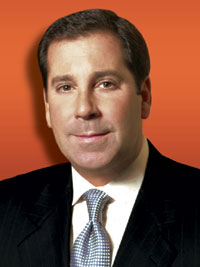“If you had a magic wand in your hand with the ability to change one thing that chiropractors do that would have an enormously positive impact on their practices come Monday morning, what would be the one thing you would change?”
Answer by: Dr. Larry Markson, The Masters Circle
I love the “magic wand” question because after 23 years of coaching chiropractors on how to build larger and more profitable practices, while becoming more personally fulfilled, I believe there is a definite answer to this question.
While the answer I am about to give may seem trite or trivial to some, trust me when I say that it is anything but that.
The answer is “Attitude.” You see, attitude is the single most important ingredient that makes the most significant difference in practice and in all of life. Member doctors who have been thoroughly questioned and debriefed after a seminar often say to us things such as, “I can’t understand it, because I haven’t had the time yet to institute any of the action steps we learned, but somehow, as if by magic, there is an excitement, a healing energy, and a happiness that has seemed to open the doors. New patients are coming in, former patients are calling for appointments, my staff is charged up and today IS a great day.”
Time and time again we receive testimonials based upon the results of those wonderful Mondays. Why? Because over the two days at our seminar, our doctors and their CA’s learn that it’s their attitude, not their aptitude, that determines their altitude in their practice and in their lives.
So, unleash your magic wand. Get positive Right Now! Stand taller, walk faster, speak louder and more enthusiastically, put a twinkle in your eyes and use an attitude of hope and expectation. Then, watch as the “magic wand” creates the difference in your life!
For more information, call 1-800-451-4514 or visit www.themasterscircle.com.
Answer by: Dr. Mark Sanna, Breakthrough Coaching.
 Commit to practice with passion. Rarely does someone excel at something that he or she is not passionate about. Planning for passion includes planning your office procedures. Take a serious look at your practice; see what your office looks like. Sit where your patients sit, lie where your patients lie. Ask yourself, “If I were a prospective patient, would I come to this practice and trust my health to these people?
Commit to practice with passion. Rarely does someone excel at something that he or she is not passionate about. Planning for passion includes planning your office procedures. Take a serious look at your practice; see what your office looks like. Sit where your patients sit, lie where your patients lie. Ask yourself, “If I were a prospective patient, would I come to this practice and trust my health to these people?
If you’ve lost your passion for practice, it may be that practice has become routine for you. You’ve gotten tired of “the same old thing”. Add excitement by adding new services or profit centers. Stress is a major passion drain. This results in your goals becoming unrealistic and unfulfilled. Your life begins to run you. You stop exercising and you become tired and unhealthy. You can better manage stress by adhering to a schedule that allows time for planning. Adhere to a daily regimen that takes practice building into account. Get up early and, for a minimum of fifteen minutes a day, write your goals and read your affirmations. Remember to plan for family times and vacations in advance as well. Compose and review a “love list” of your favorite things, people, and places and set a goal to increase their presence in your life. Most importantly, get involved in something bigger than yourself. Create a purpose for your practice that includes more than just earning a living. You will eagerly put your heart and soul into a purpose that you love and believe in.
For more information, call 1-800-723 or visit www.mybreakthrough.com.
Answer by: Dr. Sig Miller, Chiropractic Gateway.
As editor of Chiropractic Gateway, I communicate with hundreds of doctors all week long. Regarding the “magic wand” question, I can make two observations, both representing opposite ends of the spectrum.
At one end, I listen to chiropractors describing extraordinary strategies and opportunities on ways to effectively grow their practices. Rather than getting to work, they procrastinate so, a year later, that idea is still in the box. Simply stated, I want doctors to develop a mindset where they begin ripping open those boxes so they can get to work on those things they believe will work. I want them to get rid of the “what if I did this,” or “I should have done that” way of thinking.
At the other end, I see many with great ideas who get right to work. Often times, they expect an immediate return on investment, as though their idea was to be THE magic bullet in turning their practice around. Unfortunately, many times, they simply don’t have the conviction to stick with it and to see the project through to the end. In my own personal experience, I’ve learned to deal with speed bumps head on. After making some minor changes, I was able to turn things around. In my successes, I don’t usually end up where I initially thought I would. Remember, we’re on a journey. Enjoy the ride.
For more information, call 908-237-2727 or visit www.chiropracticgateway.com.
